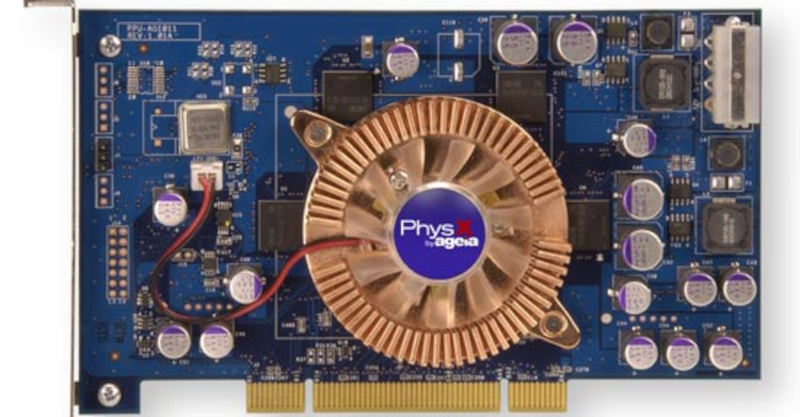Retrogadgets: The Ageia PhysX Card [Hackaday]

Old computers meant for big jobs often had an external unit to crunch data in specific ways. A computer doing weather prediction, for example, might have an SIMD (single instruction multiple data) vector unit that could multiply a bunch of numbers by a constant in one swoop. These days, there are many computers crunching physics equations so you can play your favorite high-end computer game. Instead of vector processors, we have video cards. These cards have many processing units that can execute “kernels” or small programs on large groups of data at once.
Awkward Years
However, there was that awkward in-between stage when personal computers needed fast physics simulation, but it wasn’t feasible to put array processing and video graphics on the same board. Around 2006, a company called Ageia produced the PhysX card, which promised to give PCs the ability to do sophisticated physics simulations without relying on a video card.
Keep in mind that when this was built, multi-core CPUs were an expensive oddity and games were struggling to manage everything they needed to with limited memory and compute resources. The PhysX card was a “PPU” or Physics Processor Unit and used the PCI bus. Like many companies, Ageia made the chips and expected other companies — notably Asus — to make the actual board you’d plug into your computer.
The Technology
The chip had 125 million transistors on a 0.13 micron process. With 128 megabytes of 733 MHz GDDR3 memory, the board needed an extra power connector that could draw 20 watts. The price was around $300. Quite a bit for a card that did absolutely nothing without specialized software.
There was a physics engine, NovodeX, that could handle game physics for developers using either the chip or a software stack, so we presume that’s what most gamemakers would use.
Of course, today, a 20 watt GPU with an extra power connector isn’t enough to make you look up from your screen. But times were different then. According to contemporary reports, the chip has a two terabit per second memory bandwidth. Watch the demo vide below. It won’t knock your socks off, but for a computer system nearly twenty years ago, it was pretty good.
Aftermath
So what happened? Well, the company caused quite a stir, although it isn’t clear how many people ponied up to get better performance on a handful of games. The boards were a thing for only about two years. Ultimately, though, NVidia would buy Ageia and adapt its technology to run on NVidia hardware, and so some part of it lives on today as software, and you might find some games that still boast extra PhysX features.
If you want to see a direct comparison of before and after hardware acceleration, check out the video below. Don’t forget to note the frame rates in the bottom right corner.
These days, you are more likely to get heavy processing via CUDA or OpenCL. While GPU architectures vary, they will all outperform this early entry into hardware acceleration.

![retrogadgets:-the-ageia-physx-card-[hackaday]](https://i0.wp.com/upmytech.com/wp-content/uploads/2024/05/182218-retrogadgets-the-ageia-physx-card-hackaday.png?resize=800%2C417&ssl=1)